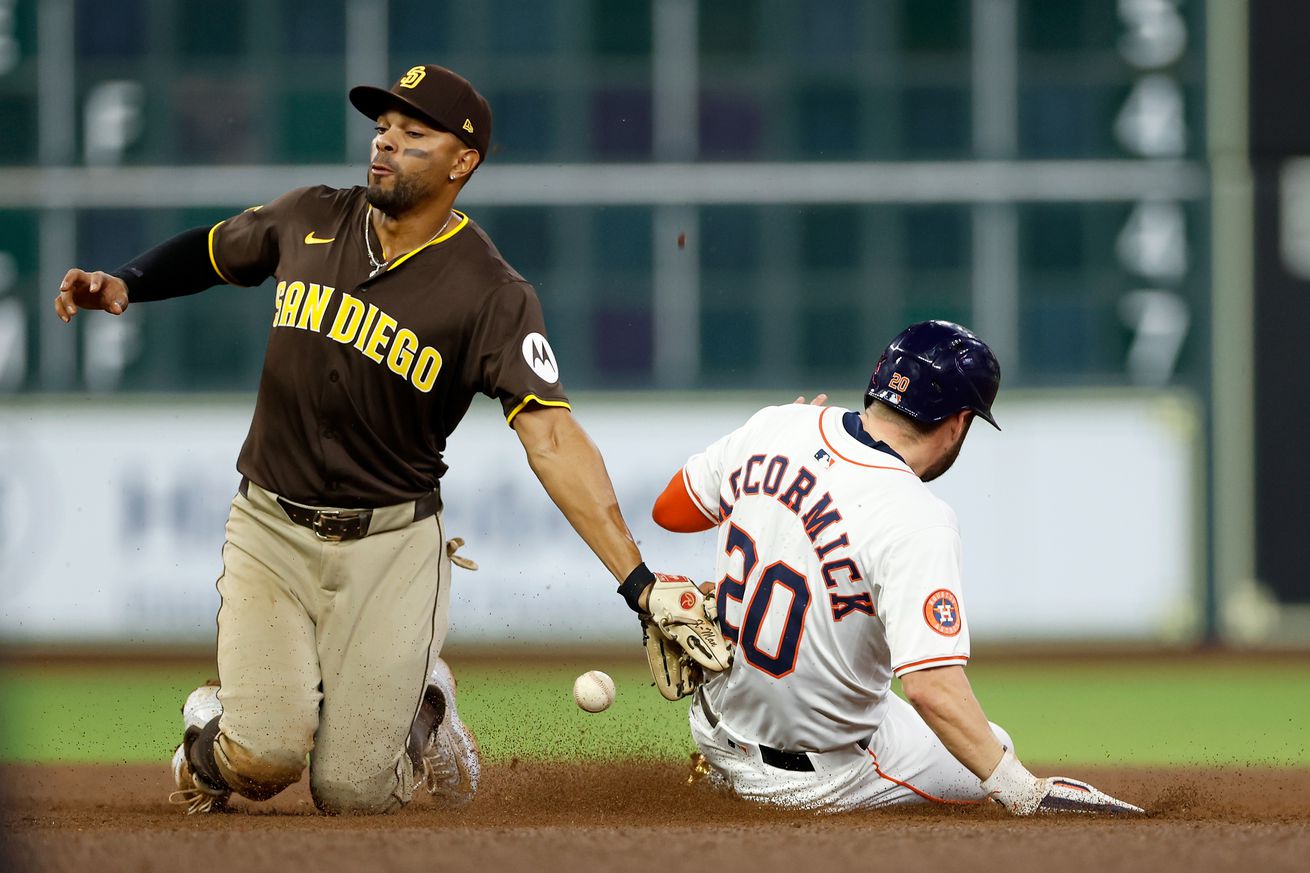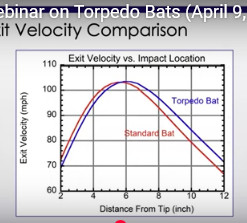
Assorted Notes As the Blue Jays Come To Town
The Astros start another week hovering around the .500 W/L range. Not a lot of excitement to write about. So, let’s try the 3 Astros Things. A smorgasbord of Astros items, for your consideration.
- Astros Pitching Staff Groundball Rate.
Chandler Rome at the Athletic wrote about Framber Valdez’s uneven start to the season and how it relates to his sinker and ground ball rate. Rome raised a warning flag about Valdez’s problematic sinker and the decline in Framber’s ground ball rate. As Rome states, for Valdez’s sinker, the problem highlights “the delicate balance he is walking without his predominant pitch, one where even the slightest uptick in velocity can affect its wicked movement.” In the past, Valdez would get into trouble when he over throws the sinker, reducing its downward action. Rome quotes manager Joe Espada saying that Framber’s sinker had a better shape in Sunday’s game.
Framber normally is a high exit velocity pitcher, usually a detrimental factor, but one that can be suppressed by his extreme ground ball rate. Valdez again has a high hard hit rate (47.5%), but it’s not the highest on the team: Hayden Wesneski and Ryan Gusto have hard hit percentages above 50%. As a team the Astros’ pitching staff has the 9th highest hard hit rate (43.9%) among MLB teams. At this point, my guess is that the Astros’ defensive proficiency shares credit for preventing damage from the hard hit balls.
While Rome’s piece expresses concern about Valdez’s ground ball rate, I’m not too concerned—yet. It’s still a small sample, the GB rates don’t take much time to improve. Also, his 51.9% ground ball rate is still good, although it falls short of Framber’s normal 60%+ extreme GB rate.
Hunter Brown currently leads Astros’ pitchers in ground ball rate (58%), which is better than his career 52% GB rate. Brown’s ground ball rate is particularly imposing considering his 97 mph average FB velccity. In addition, if you use Pitcher EV50 to measure soft contact, Brown has been inducing quite a bit of soft contact. By this measure, Hunter Brown is Top 10 on the Statcast leaderboard for EV50. Opponents don’t look forward to facing Brown.
But Brown and Valdez are the only two real ground ball pitchers on the pitching staff. Despite the groundy ways of Valdez and Brown, the Astros pitching staff is ranked 23d in ground ball rate (39%). Starters Wesneski and Gusto are at identical 36% GB rates. The relievers fall in the range of 13% – 31% GB rate. How can they prevent runs with low GB rates? I would suggest two factors: high K rates and good OF defense. Indeed, that is why the Astros search for high K rate relievers.
2. Taking Extra Bases
For the second Astros’ thing, I’ll return to Rome’s Athletic article. Rome discusses Astros’ base running improvement in taking extra bases:
Baseball Reference measures its extra bases taken percentage by the frequency with which a team advances more than one base on a single or more than two bases on a double. The Astros did it 36 percent of the time last season, tied with the New York Yankees for the lowest number in baseball.
After 20 games this season, Houston is taking an extra base 53 percent of the time. Only four teams have a higher number.
When the team is tied with the Yankees for worst extra base advancement ratio in the majors, remedial action by the front office and coaching staff is warranted. And the Astros are seeing some success in doing so, so far. Rome suggests that the third base coach was hired because Espada was impressed with the D-Backs’ base running aggressiveness. “Espada hired (third base coach) Perezchica, in part, for how well the Arizona Diamondbacks ran the bases during his tenure. “
As we have seen in recent games, Espada isn’t mad when Astros’ base runners pass through “stop signs” in order to score. In the post game interview on Saturday, Espada said he wants that type of aggressiveness.
3. Torpedo Bats
In the last 3 Astros Things article, I discussed the uproar over the torpedo bats and wondered which Astros’ players would utilize the new type of bat. As far as I know, Mauricio Dubon is the only Astros’ batter using the torpedo bat. Dubon’s batting numbers haven’t exactly been an endorsement for the bat. But that probably doesn’t mean much. Many other factors—including human factors—are likely to overwhelm the impact of different bat shapes. Just from a curiosity standpoint, it would be interesting if additional Astros’ hitters tried using the bat in games.
So, my third thing is to update my previous discussion of the torpedo bat. SABR, the long time organization supporting sabermetrics, conducted a webinar about the torpedo bat. The webinar includes Alan Nathan, a physics professor at the University of Illinois, who is one of most cited experts regarding the physics of baseball. He has his own “Physics of Baseball” web site here.
Tangotiger linked the webinar here. Or you can go to the you tube link directly. I also took a screenshot of Dr. Nathan’s chart on the exit velocity of the torpedo bat vs. the normal bat.

SABR Webinar
The webinar examined five hitters who have been using the torpedo bat, and found that each of them experienced an increase in swing speed and an increase in blasts per swing.
Dr. Nathan made several points:
- The exit velocity increase from the middle of the bat toward the handle is more significant than the minimal loss of exit velocity at the higher end of the bat. The “net” of the impact appears to be an overall increase in EV.
- The Torpedo Bat weight distribution not only moves the sweet spot a couple inches closer to the handle but it also increases the size of the sweet spot. He said this may be the main advantage, the frequency of hitting on the sweet spot should be higher.
- He also wondered if pitchers would make adjustments if the bat became more popular. For instance, would pitchers reduce the frequency of pitching inside, toward the bat handle, and increase pitches on the outside of the plate.
Ex-Astros hitter Jed Lowrie was also on the webinar to give a player’s perspective. As an ex-player, he said he would definitely be interested in trying the bat, but he does not favor changing bats during the season. He acknowledged that hitters could differ on this, but if he was still playing, he would be more likely to wait until the off-season to change bats, so that he could take the time to adjust to the feel of the bat.
Do some of the Astros’ batters take a similar view, and will wait until the off-season to make a change (if any)? My overall take— this webinar persuades me that some of the Astros’ batters might benefit from using the torpedo bat. Is the current slump a reason to try them?